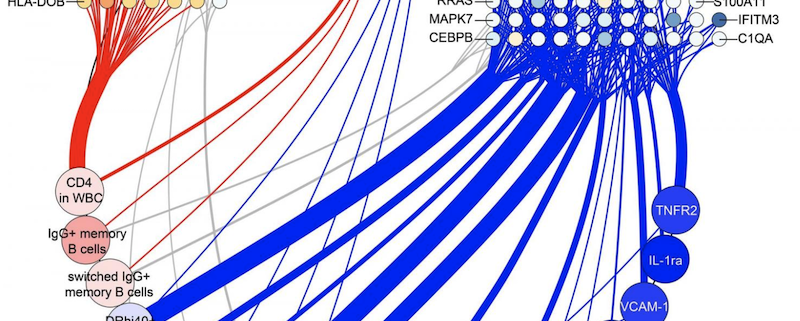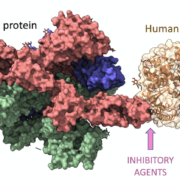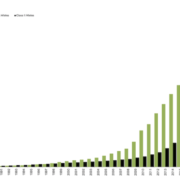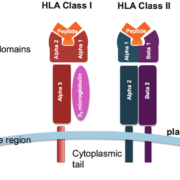The Influence of HLA Typing on Disease Susceptibility
The Human Leukocyte Antigen (HLA) system functions as a pivotal player in the architecture of our immune response, playing a key role in the recognition and eradication of foreign pathogens. By studying the variations in HLA types, or HLA typing, we can gain significant insight into an individual’s predisposition to specific infectious diseases and their immunological response to vaccinations. This extensive examination will delve into the intricate relationships between HLA typing, susceptibility to infectious diseases, and the immune response to vaccines, illuminating the profound influence HLA has on our health.
HLA Typing and Susceptibility to Infectious Diseases
HLA, as an integral part of our immune system, exhibits a striking degree of polymorphism. This genetic diversity has been associated with differential susceptibility to various infectious diseases. The relationship between HLA typing and infectious diseases is complicated, as certain HLA types can either increase or decrease susceptibility to specific diseases.
For instance, in the context of HIV infection, certain HLA types such as HLA-B57 and HLA-B27 have been associated with a slower progression of the disease. This association suggests that these particular HLA types may present HIV antigens more effectively to cytotoxic T cells, thereby facilitating a more robust immune response against the virus. Conversely, other HLA types have been linked to a more rapid progression to AIDS, highlighting the fact that HLA typing can influence the course of HIV infection in different ways.
In the case of Hepatitis B, HLA-DRB113 and HLA-DQB106 have been found to be associated with a decreased risk of chronic Hepatitis B infection. This relationship suggests that these HLA types may be more efficient in presenting Hepatitis B antigens, triggering a more effective immune response against the virus.
Similarly, susceptibility to tuberculosis varies depending on the HLA type. HLA-DR2 and HLA-DQ1 are associated with increased susceptibility, suggesting that these HLA types may be less effective in mounting an immune response against Mycobacterium tuberculosis. On the other hand, HLA-DR3 has been linked to a decreased risk of infection, indicating a potentially more efficient immune response.
These examples illustrate the intricate relationship between HLA typing and infectious disease susceptibility. Understanding these associations can aid in identifying populations at risk, which in turn can guide the development of targeted prevention and intervention strategies.
HLA Typing and Vaccine Response
The HLA system’s influence extends beyond disease susceptibility to also affect an individual’s immune response to vaccines. Certain HLA types can modulate the magnitude and quality of the immune response elicited by a vaccine, leading to variability in vaccine effectiveness across different individuals.
For example, individuals with the HLA-DRB107 allele have been associated with a poor response to the Hepatitis B vaccine. In contrast, those with HLA-DRB101, HLA-DRB104, and HLA-DQB102 have been linked to a favorable response. These associations suggest that the presentation of Hepatitis B antigens by these specific HLA types influences the immune response to the vaccine, thus impacting the vaccine’s effectiveness.
Similarly, the immune response to the measles component of the MMR (measles, mumps, rubella) vaccine can also be influenced by HLA typing. For instance, individuals with the HLA-DRB1*03 allele have been found to have a lower antibody response to this vaccine, indicating that this HLA type may affect the immune response to the measles virus.
Understanding these associations is crucial as it can guide the development of personalized vaccination strategies. It can also help identify individuals who may require additional doses or alternative immunization approaches to achieve adequate protection.
Future Directions
As we continue to expand our understanding of the complex relationship between HLA typing, infectious disease susceptibility, and vaccine response, researchers are pushing the boundaries to develop personalized medicine approaches that can enhance the prevention and control of infectious diseases. These innovative strategies might encompass:
- HLA-based risk assessment: This approach involves identifying individuals at an increased risk of infection based on their HLA type. By understanding how specific HLA types increase susceptibility to particular diseases, we can develop targeted prevention strategies. For example, individuals with HLA types associated with a higher risk of tuberculosis might benefit from more frequent screenings or prophylactic treatment. Similarly, individuals with HLA types linked to slower HIV progression might be prioritized for interventions aimed at maintaining viral suppression.
- Personalized vaccination: This strategy involves tailoring vaccination protocols to an individual’s HLA type. Given the variability in vaccine response based on HLA typing, a personalized approach could potentially improve vaccine efficacy. For instance, individuals with HLA types associated with a lower response to the Hepatitis B or MMR vaccine might benefit from additional booster shots or higher vaccine doses. On the other hand, those with HLA types associated with a strong vaccine response might require fewer doses, reducing the risk of potential adverse effects.
- HLA-guided therapeutics: This approach involves developing drugs targeting specific HLA types associated with increased susceptibility to infection. HLA-guided therapeutics could potentially improve treatment outcomes by enhancing the immune response against specific pathogens. For instance, drugs designed to enhance the presentation of viral antigens by certain HLA types could boost the immune response against viruses such as HIV or Hepatitis B.
These strategies reflect the potential for HLA typing to revolutionize infectious disease prevention and control. However, the implementation of these approaches requires a comprehensive understanding of the complex relationships between HLA typing, disease susceptibility, and vaccine response.
Conclusion
HLA typing provides a window into the individual’s immune system, offering insights into susceptibility to infectious diseases and the response to vaccines. While we have made significant strides in understanding these relationships, there is still much to explore. The complexity of the HLA system, combined with the diversity of infectious diseases and vaccines, presents a challenging yet exciting frontier in immunology research.
As we delve deeper into the intricate relationships between HLA types and the immune response, we can expect to see advances in personalized medicine that will enhance infectious disease prevention and control. By tailoring prevention strategies and treatments to the individual’s HLA type, we can improve health outcomes and reduce the burden of infectious diseases. While the path towards personalized medicine is complex, the potential benefits make this a journey worth pursuing. The promise of improved disease prevention and control based on an individual’s unique genetic makeup represents a new era in infectious disease management and a significant step forward in achieving optimal health for all.







 The Sequencing Center
The Sequencing Center

Leave a Reply
Want to join the discussion?Feel free to contribute!